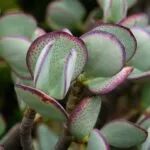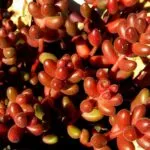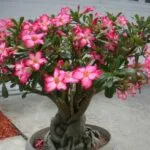Index
Introduction
Dracena-marginata, also known as “Madagascar Dracena” or “Dracena marginata tricolor”, is an ornamental plant that is popular indoors. With its long narrow leaves and vibrant coloring, it adds a touch of elegance to any space.
Meaning of Dracena-marginata
In addition to its aesthetic beauty, the Dracena-marginata carries symbolic meanings. Associated with prosperity, good luck and vitality, this plant is chosen not only for its easy maintenance, but also for transmitting a positive and revitalizing atmosphere to the environment in which it is present. Its name “marginata” refers to the reddish or pinkish edges on its leaves, adding a touch of sophistication to its presence.
| Common Name | Dracena-marginata |
|---|---|
| Botanical Name | Dracaena marginata |
| Family | Asparagaceae |
| Plant Type | Ornamental shrub |
| Adult Size | Up to 3 meters high |
| Sun exposure | Indirect light in full sun |
| Soil type | Well-drained |
| soil pH | Slightly acidic to neutral (6.0 to 7.5) |
| Flowering time | Spring and summer |
| Flower color | White or cream-colored inflorescences |
| Native Area | Madagascar, Mauritius |
| Toxicity | Toxic to pets (cats, dogs) |
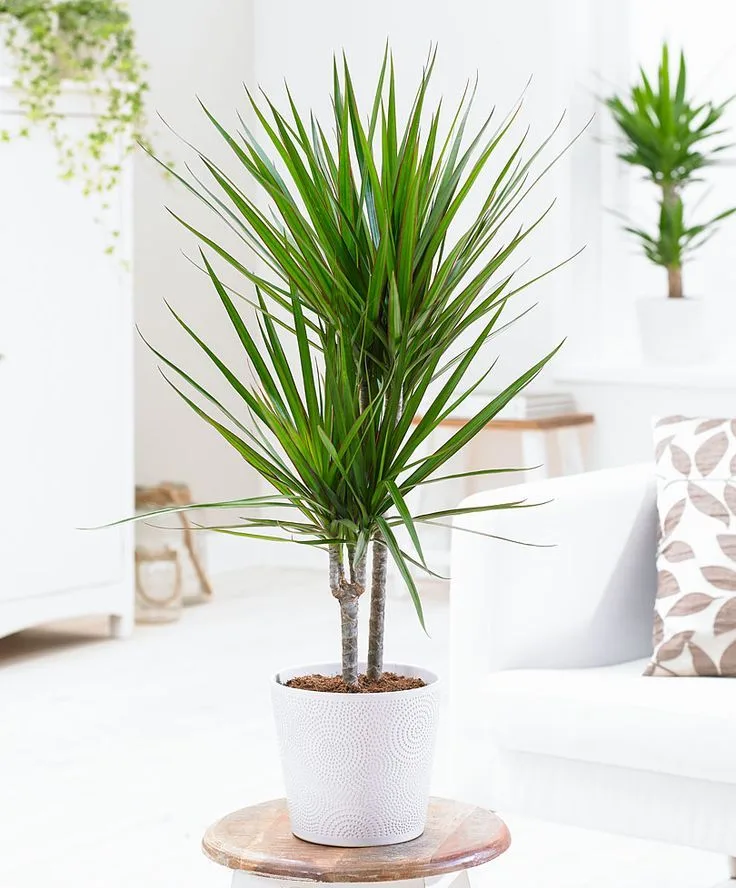
How to Care for Dracena-marginata
Light
Dracena-marginata thrives in indirect light in full sun. Avoid direct exposure to strong sunlight, especially during the hottest hours.
Soil
Prefer well-drained soil rich in organic matter. Make sure the container has good drainage holes to avoid water accumulation.
Water
Water when the soil is dry to the touch, allowing the top of the soil to dry out between waterings. Avoid waterlogging, as this can lead to root rot.
Temperature and humidity
Dracena-marginata adapts well to temperatures between 18°C and 30°C. Keep the humidity moderate, but it tolerates drier conditions.
Fertilizing
Fertilize monthly during spring and summer with a balanced fertilizer. Reduce the frequency during fall and winter.
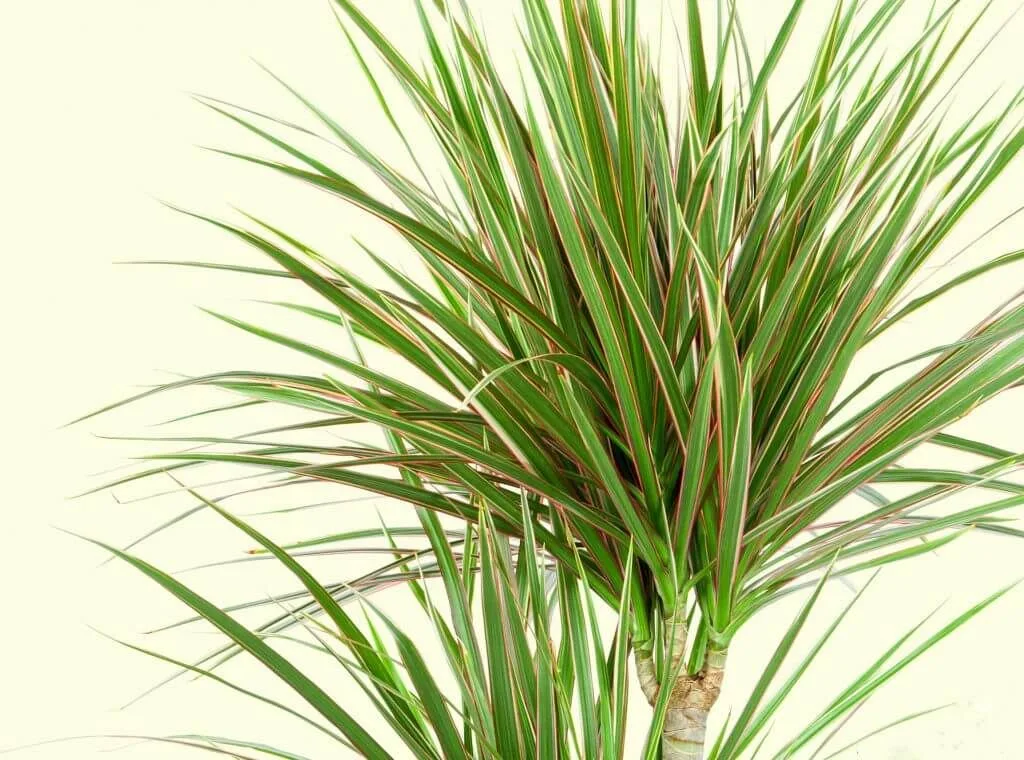
How to Cuttings Dracena-marginata
Want to multiply your Dracena-marginata? Here are the steps to making cuttings and expanding your garden!
1. Choosing a branch:
Objective: Select a healthy branch to ensure a robust seedling. Choose a strong lateral branch that is at least 15 cm long.
2. Preparing the cutting:
Objective: To prepare the cutting for rooting. Remove the lower leaves and cut the branch at a 45-degree angle using sterilized pruning shears.
3. Rooting in Water:
Objective: To start the rooting process. Place the branch in a container of water, changing it every few days until roots about 5 cm long develop.
4. Planting in soil:
Aim: To transplant the rooted cutting into the ground. Prepare a light, well-drained soil, plant the seedling and keep it moist for the first few days.
5. Post-planting care:
Objective: To ensure that the seedling adapts. Place the seedling in a spot with indirect light, avoiding direct sunlight. Water regularly, but avoid waterlogging.
With these simple steps, you can multiply your Dracenas-marginatas and share the green beauty in your home!
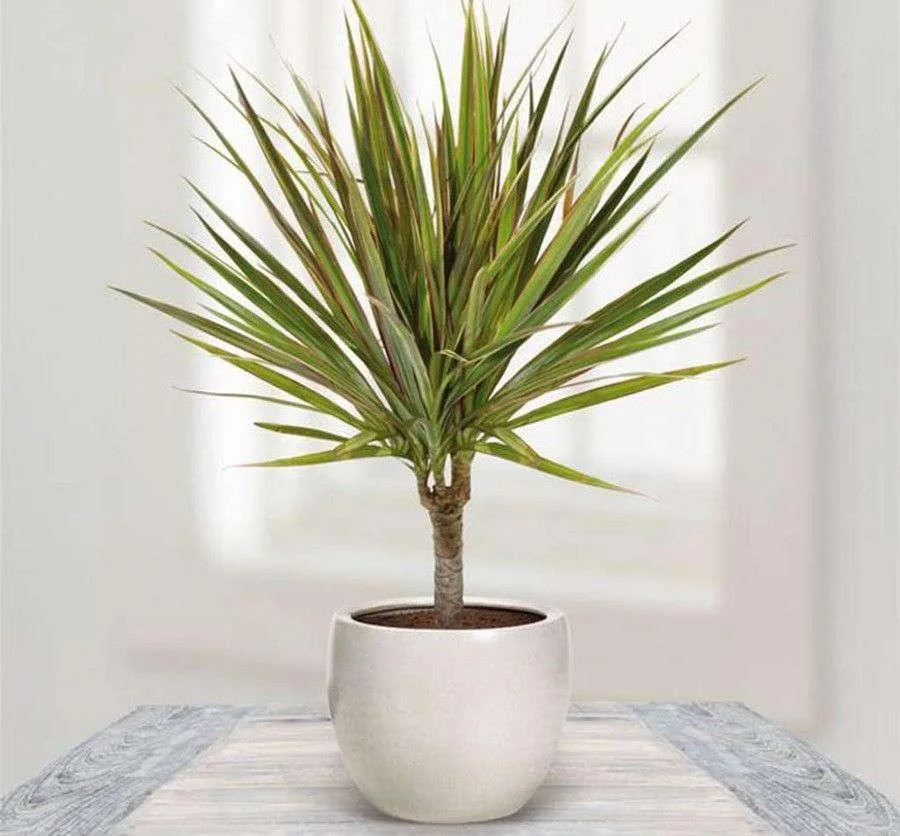
Dracena-marginata pests and diseases
Common pests:
- Mites:Tetranychus urticae
- Symptoms: Yellowish spots on the leaves.
- Solution: Use predatory mites or neem oil.
- Mealybugs:Coccoidea
- Symptoms: White or grayish spots on the leaves.
- Solution: Remove by hand or use mineral oil.
- Aphids:Aphididae
- Symptoms: Distorted shoots and honeydew on the leaves.
- Solution: Wash the leaves with water or use natural insecticides.
Common diseases:
- Leaf spot: Cercospora spp.
- Symptoms: Circular spots on the leaves.
- Solution: Remove affected leaves and apply fungicide.
- Root rot: Pythium spp.
- Symptoms: Yellowing of the leaves and rotting of the roots.
- Solution: Replant in well-drained soil and avoid overwatering.
- Downy mildew: Peronospora dracaenae
- Symptoms: Whitish spots on the leaves.
- Solution: Keep humidity low and apply fungicides.
Common Problems and Solutions:
- Yellowing leaves:
- Cause: Overwatering or lack of nutrients.
- Solution: Adjust watering and fertilize as necessary.
- Dry tips:
- Cause: Low humidity or intense sun exposure.
- Solution: Increase humidity and protect from direct sunlight.
- Slow growth:
- Cause: Lack of light or nutrients.
- Solution: Move to a brighter spot and fertilize regularly.
By identifying and treating these problems efficiently, your Dracena-marginata will continue to thrive with health and vitality.
Curiosities and myths
Curiosities:
1. Ornamental Versatility:
- Dracena-marginata, also known as “Madagascar Dracena”, is appreciated for its ornamental versatility, being a popular choice for interiors due to its elegant leaves and slender shape.
2. Air purifier:
- In addition to its beauty, this plant is recognized for contributing to indoor air quality by removing harmful substances such as formaldehyde and xylene.
3. Longevity:
- With proper care, Dracena-marginata can live for many years, making it a long-lasting companion in domestic environments.
Myths:
1. Extreme Resistance:
- Although it is a resilient plant, Dracena-marginata still requires specific care, and the myth that it is totally resistant to neglect can lead to plant health problems.
2. Indestructible in Dark Environments:
- Although it tolerates low light conditions, its optimal growth occurs in well-lit places. The myth that it will thrive in complete darkness can lead to unsatisfactory development.
3. Fast growth:
- Although it is possible to stimulate growth, Dracena-marginata is a slow-growing plant. The myth that it will grow quickly can lead to unrealistic expectations.
By understanding these curiosities and demystifying certain concepts, you will be better prepared to take proper care of your Dracena-marginata.
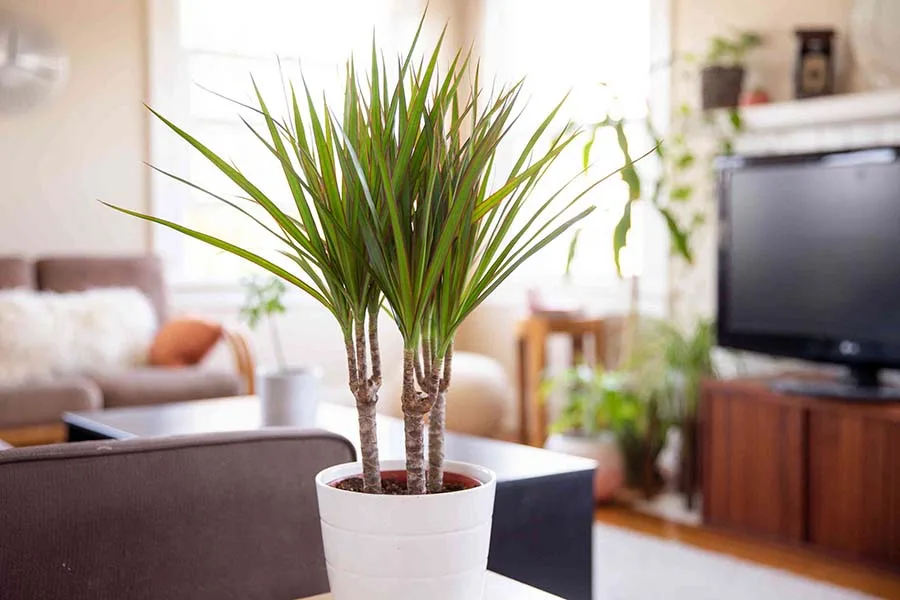
Conclusion
To sum up, we’ve explored the fascinating characteristics of the Dracena-marginata, from its ornamental versatility to its role as an air purifier. Its appeal goes beyond aesthetics, playing a vital role in improving the quality of the indoor environment.
By debunking common myths, such as its supposed extreme resistance or accelerated growth, we reinforce the importance of understanding its specific needs. Dracena-marginata, with its nuances and curiosities, proves to be a valuable addition to homes, providing not only visual beauty, but also a touch of vitality and well-being. By cultivating this plant with knowledge and dedication, we reap not only its lush leaves, but also the lasting benefits it offers our living space.
Frequently asked questions
Is it good to have dracena at home?
Having the Dracena plant at home is great, as it not only adds beauty with its elegant leaves, but also contributes to purifying the air by removing harmful substances.
Where is the best place to plant dracena?
The best place to plant Dracena marginata is in bright indirect light. It thrives in well-lit indoor environments, but avoid intense direct sunlight.
How to care for a Dracena marginata?
To care for Dracena marginata, it is essential to provide moderate watering, well-drained soil, avoid overwatering and keep the plant in suitable humidity conditions. Pruning occasionally also helps to maintain its healthy growth.


